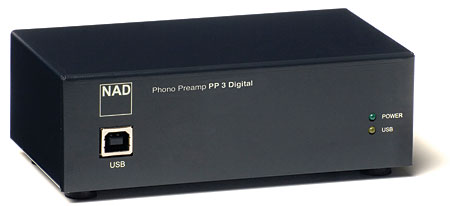I'm a bit surprised at Amir's results when it comes to the RIAA curve. Although it's not a massive deviation, I'm wondering if this unit could be slightly faulty.
I have this preamp myself, and while I haven't measured it per se, I recorded some records with the Mofi and then also with an NAD PP-4, and then compared the two with the plugin CurvEQ, which shows the difference in EQ.
Stereophile measured the previous incarnation of the NAD, which had around 0.25 dB deviation from the RIAA curve:
Sidebar 3: Measurements

www.stereophile.com
When I loaded my recordings with the two preamps into CurveEQ (I did the recordings right after each other), this was the result with the NAD having more deep bass, as it has a weaker subsonic filter. The orange line shows the difference between the two preamps with an MC cartridge:
Also, HiFi News measured the Ultraphono, and while this is not the same unit, then as far as I have understood, the only difference between the two was some features and perhaps lower noise in the Ultraphono, but the rest should be identical. HiFi News' measurements look pretty much like my chart above:
Lab Report At first sight the row of 12 DIP switches governing input loading and gain may be enough to make all but the most ardent of audiophile's hearts sink. However in practice only the two outermost switches are required to cycle through MoFi's selection of +40dB/+46dB (MM) and +60dB/+66dB...

www.hifinews.com
Lastly, a question:
I moved to another house recently and thought that I had damaged my cartridge while moving, because I recorded a few records that I had recorded before, and when I loaded them in the CurveEQ to compare the new recordings to the recordings from before moving, the newer recordings showed a gradual drop-off in high frequencies of around 1 dB from 2 kHz to 12 kHz.
My cartridge is an Audio Technica AT33PTG/II, and I bought another one a while ago, which I only used to record a few songs, just to make sure the cartridge was okay.
So, I mounted this new cartridge today, recorded the same records and compared them with the recent recordings done with the other cartridge in CurveEQ, and they were almost identical.
So, this gradual drop-off doesn't seem to be the cartridge, so I'm wondering if it could be the Mofi phono preamp, possibly my Focusrite 2i2 converter, the cables or something else. I tried moving the dip switches on the Mofi back and forth with no difference.
Does anyone have any idea?
Unfortunately, I currently don't have the ability to switch out any of the equipment.
Everything is set up exactly the same way as in my previous house (on the same rack and everything), and when I've moved before, I've only seen at most a slight difference in rumble or similar, as when I moved the turntable to my current rack instead of having it on top of another piece of furniture.

